
[2022 - present] Equilibrium Physics at Extreme Conditions - Postdoctoral Researcher, Lawrence Livermore National Labtoratory, working with Zsolt Jenei.
[2021] Ph.D. University of Chicago (Geophysical Sciences)
Zurkowski C. C., Yang J., Miozzi F., Vitale S., O'Bannon III E. F., Jenei Z., Chariton S., Prakapenka V. B., and Fei Y. Exploring toroidal anvil profiles for larger sample volumes above 4 Mbar. Accepted at Scientific Reports.
Zurkowski, C.C., and Fei, Y. (2023) Mineralogy of Planetary Cores. In Celebrating the International Year of Mineralogy: Progress and Landmark Discoveries of the Last Decades (207-247). Cham: Springer Nature Switzerland. DOI
[2019] Teaching Assistant for GEOS 21000 Mineralogy, University of Chicago [2018-Present] PhD candidate, University of Chicago's Laboratory of Mineral Physics [2016-2018] Graduate Student, University of Chicago's Laboratory of Mineral Physics [2016 ] Visiting Student, University of Chicago's Laboratory of Mineral Physics [2015-2016] Field and Research Assistant, San Francisco State University [2015] Research Assistant, United States Geological Society, Menlo Park [2014-2015] Research Assistant, Isotope Geochemistry Laboratory,The University of Maryland
[2024] Argonne National Lab "Achieving quasihydrostatic equations of state in the toroidal diamond anvil cell-- The case study of Molybdenum" [2024] University of California, Berkeley, "Crystallography and phase relations of iron sulfides at Earth and planetary core conditions" [2024] Southern Illinois University, "Mysteries beyond our solary system-- Characterizing the mineralogical building blocks of rocky exoplanets" [2024] University of Utah, "Mysteries beyond our solary system-- Characterizing the mineralogical building blocks of rocky exoplanets" [2024] University of Alabama Tuscaloosa, "Progress in synchrotron multigrain X-ray diffraction techniques-- Exploring the petrology of deep planetary interiors" [2024] University of Tennessee Knoxville, "Mysteries beyond our solary system-- Characterizing the mineralogical building blocks of rocky exoplanets" [2024] Oak Ridge National Laboratory, "Mysteries beyond our solary system-- Characterizing the mineralogical building blocks of rocky exoplanets" [2024] Boise State University, "Mysteries beyond our solary system-- Characterizing the mineralogical building blocks of rocky exoplanets" [2023] University of Lille, "Progress in synchrotron multigrain X-ray diffraction techniques-- Exploring the petrology of deep planetary interiors" [2023] University of Bristol, "Progress in synchrotron multigrain X-ray diffraction techniques-- Exploring the petrology of deep planetary interiors" [2023] Lafayette College, "Mysteries beyond our solary system-- Characterizing the mineralogical building blocks of rocky exoplanets" [2023] West Chester University, "Mysteries beyond our solary system-- Characterizing the mineralogical building blocks of rocky exoplanets" [2023] Macalester College, "Mysteries beyond our solary system-- Characterizing the mineralogical building blocks of rocky exoplanets" [2023] American Geophysical Union, "Assessment of the platinum, gold, and rhenium scales at multimegabar pressures using new compression data from toroidal anvil experiments" [2023] IUCr Congress, "Probing the interiors of Earth and planetary cores using synchrotron multigrain X-ray diffraction" [2022] IUCr High Pressure Workshop, "Iron-sulfide crystallography at the extremes– Insights into rocky planetary cores" [2022] Lorentz Center Diversity of Rocky Exoplanets Workshop, "Exoplanetary mineralogy and advances in experimental tools to probe exoplanetary deep interiors" [2022] Lawrence Livermore National Laboratory, High-Pressure Physics Group, "Crystallography at the extremes: Insights into Earth and exoplanetary deep interiors" [2021] Carnegie Institution for Science, Experimental Petrology and Mineral Physics Group, "High P-T multigrain synthesis and the importance of powder and single crystal X-ray diffraction techniques" [2021] Carnegie Institution for Science, Experimental Petrology and Mineral Physics Group "Investigating the structural properties of Fe-rich sulfides to Earth’s core pressures and high temperatures"
Zurkowski C.C., O'Bannon E.F., Jenei Zs., Chariton S., Prakapenka V.B., and Fei Y. Assessment of the platinum, gold, and rhenium scales at multi-megabar pressures using new compression data from toroidal anvil experiments, Abstract MR23A-03 presented at 2023 meeting, AGU, Dec. 12 (Invited Oral Presentation) Zurkowski C.C., Lavina B., Chariton S., Prakapenka V.B., and Fei Y. Exploring the iron content of bridgmanite and post perovskite coexisting with iron metal at Earth's core mantle boundary, Abstract MR14A-07 presented at 2023 meeting, AGU, Dec. 11 (Oral Presentation) Zurkowski C.C., Yang J., Chariton S., Prakapenka V.B., and Fei Y. Synthesis of an eight-coordinated Fe3O4 high-pressure phase: Implications for the mantle structure of super- Earths, Abstract MR35A-07 presented at 2022 meeting, AGU, Dec. 14 (Oral Presentation) Zurkowski C.C., Yang J., Chariton S., Prakapenka V.B., and Fei Y. Synthesis of an eight-coordinated Fe3O4 high-pressure phase: Implications for the mantle structure of super- Earths, presented at the 2022 Lorentz Center Workshop: Diversity of Rocky Exoplanets, Leiden, 5-9 Sep. (Poster Presentation) Zurkowski C.C., Lavina, B., Yang J., Chariton S., Tkachev, S., Prakapenka V.B., and Fei Y. Crystal structure of feiite determined by single-crystal X-ray diffraction, presented at 2022 meeting, IMA, Lyon, 18-22 Jul. (Oral Presentation, given by Yingwei Fei) Zurkowski C.C., Yang J., Chariton S., Prakapenka V.B., and Fei Y. Synthesis of an eight-coordinated Fe3O4 high-pressure phase: Implications for the mantle structure of super-Earths, presented at 2022 meeting, ISoC, Erice, 3-11 Jun. (Poster Presentation) Zurkowski C.C., Yang J., Chariton S., Prakapenka V.B., and Fei Y. Synthesis of an eight-coordinated Fe3O4 high-pressure phase: Implications for the mantle structure of super-Earths. Abstract 1459 presented at 2022 meeting, LPSC, 7-11 Mar. (Poster Presentation) Zurkowski, C.C., Swabda, K., Case, A., Lavina, B., Chariton, S., Greenberg E., Prakapenka V.B., and Campbell A.J. (2021) Synthesis and characterization of a new complex iron sulfide at Earth’s outer core conditions. Abstract DI35D-0062 presented at 2021 meeting, AGU, Dec. 15 (Poster Presentation) Zurkowski, C.C., Lavina, B., Chariton, S., Greenberg E., Prakapenka V.B., and Campbell A.J. (2021) Phase stability and structural properties of Fe 2 S and its analog Co 2 P at high pressures and temperatures. Abstract EGU21-1862 presented at 2021 meeting, EGU, 26 Apr. (Oral Presentation) Zurkowski, C.C., Lavina, B., Chariton, S., Greenberg E., Prakapenka V.B., and Campbell A.J. (2020) Phase stability and structural properties of Fe 2 S and its analog Co 2 P at high pressures and temperatures. Abstract MR024-05 presented at 2020 meeting, AGU, 1-17 Dec. (Oral Presentation) Zurkowski, C.C., Davis A.E., Chariton, S., Prakapenka, V.B., and Campbell, A.J. (2020) A hexagonal Fe 3 S phase at Earth's core conditions. Abstract. COMPRES Annual Meeting (Oral Presentation)
[2023-2024] Mineralogical Society of America Distinguished Lecturer, Peter Buseck New Developments in Mineralogy and Petrology lecturer [2021] Advances in synchrotron-based research towards understanding the structure, evolution, and dynamics of Earth and planetary interiors workshop postdoc participation award, APS [2020] Arts, Science + Culture Initiative Graduate Collaboration Grant awarded [2019] Student Presentation Award, COMPRES Annual Meeting [2018] Student Presentation Award, COMPRES Annual Meeting [2018-2021] NSF Graduate Research Fellowship [2017] Outstanding Student Paper Award, Mineral and Rock Physics, AGU Fall Meeting [2017] McCormick Fellowship, University of Chicago [2016] Department Honoree, San Francisco State University [2013-2016] Deans List, Pratt Institute, University of Maryland, San Francisco State University [2014] Distinguished Flying Cross Scholarship [2013] Presidential Scholarship, Pratt Institute [2013] Valedictorian, The John Carroll School [2013] Judith Resnik Award for Women in the Sciences [2013] William J. Sacco Award for Applied Mathematics Scholarship [2013] Math, Physics, and Art Student of the Year
[2024] Elected member of the SEES (Synchrotron Earth and Environmental Science) user committee [2023] MSA distinguished lecturer [2023] AGU session chair [2023] Livermore family day tourguide [2022] Carnegie Trustee poster session presenter [2022] AGU session convener [2021] Advances in synchrotron-based research towards understanding the structure, evolution, and dynamics of Earth and planetary interiors workshop, APS, session chair [2020] Art-science interview with Notre [2020] Art-science interview with Space Us [2019] Art-science interview with UChicago News [2019] Twitter account manager for AGU's Mineral and Rock Physics section [2019] Instagram account manager for @ArtSciInitiative [2019-2020] Vice Chair of COMPRES student planning committee [2019-2020] AGU student representative for Mineral and Rock Physics [2018-2019] COMPRES student planning committee member [2018] Women in Graduate Science Student Leadership Team - University of Chicago - Geophysical Sciences representative [2018] Physical Sciences Divison Dean's Student Advisory Committee - University of Chicago - Geophysical Sciences representative [2017] Docent in the mineralogy and meteorite exhibitions of the Field Museum in Chicago [2017] Math and science tutor at the Marillac Social Center in Chicago [2016] UChicagoGrad Lab Tours (Featured Speaker) [2016] Upward Bound Tutoring Program serving high school students of low income families [2016] Argonne National Lab's Hour of Code volunteer at Peck Elementary School [2016] Mentor Matching Engine mentor for high school STEM students at the Illinois Science and Technology Institute
Check out this APS highlight on my recent paper published in Geochemical Perspectives Letters based on data collected at APS Sector 13 ID-D.

Department of the Geophysical Sciences 5734 S. Ellis Ave. Chicago, IL 60637

Department of the Geophysical Sciences 5734 S. Ellis Ave. Chicago, IL 60637
This site uses Cookies - please see our privacy page for further information.

« All Events
- This event has passed.

Clays and construction: 2023 Clay Minerals Group Research-in-Progress meeting
18 may 2023 @ 8:00 am - 5:00 pm.
Click here to register to attend
18 May 2023
This event is a collaboration between Mineralogical Society of the UK and Ireland and TFI Network+
This meeting will explore recent advances in understanding the role of clay minerals in construction, and how they can be used to shape and improve the built environment. This topic area spans everything from clay-based renders to improve air quality, the role of clay minerals in geotechnics, calcined clays in low-carbon cements, natural earth building, and much more.
We invite abstracts on any topic in clay mineral science in general, including research-in-progress. We particularly encourage those with interest in the theme of clays and construction, early career researchers, and those working in industry.
Our keynote speaker will be announced here shortly.
Online registration, which is free of charge, is now open.
- Google Calendar
- Outlook 365
- Outlook Live
TFI Network+ is committed to supporting, embedding and promoting equality, diversity and inclusion across the network.
In partnership with.

Visit of Omololu Akin-Ojo: Bringing Research Excellence To Africa
Guest: omololu akin-ojo (visit date: nov. 12-19, 2022).
Director, ICTP East African Institute for Fundamental Research , University of Rwanda, Kigali Rwanda
Host: Renata Wentzcovitch
APAM and Earth/Environmental Sciences Departments, Columbia University
Materials Simulations in Earth and Planetary Sciences Seminar Series
This virtual seminar series consists of talks on current applications of Materials Simulations to Earth and Planetary Sciences. It meets on select Mondays at 3:00 PM ET.
Host: Renata Wentzcovitch, APAM and DEES, Columbia Engineering
- Sep. 12, speaker: Christine McCarthy , Lamont-Doherty Earth Observatory; video: Ice rheology applied to planetary bodies: what we know and what we don’t know
- Sep. 19, speaker: Yang Sun , Department of Physics, Iowa State University and APAM, Columbia University; video: Simultations of iron in the Earth’s core conditions
- Oct. 3, speaker: Bijaya Karki , Louisiana State University; talk: First-principles Computation of Earth’s Mantle Materials: A Review and New Perspectives
- Oct. 10, speaker: Shun-ichiro Karato , Department of Earth and Planetary Sciences, Yale University; video: What do we want to learn about the physical properties of super-Earths from theoretical mineral physics?
- Oct. 17, speaker: Ian Ocampo , Princeton University; video: Dynamic compression of iron oxides to multi-megabar pressures
- Oct. 20, spealer: Dan Shim , Arizona State University; talk: “Dissolution of Calcium into Bridgmanite and Disappearance of Davemaoite in Warm Regions of the Lower Mantle”
- Oct. 24, speaker: Mark Tuckerman , Chemistry Department, New York University; talk: “Simulation studies of molecule and ion transport in hydrogen-bonded media”
- Oct. 31, speaker: Peter Kelemen , Department of Earth and Environmental Sciences, Lamont Doherty Earth Observatory, Columbia University; talk: “Serpentines”
- Nov. 07, speaker: Baosheng Li , Stony Brook University; talk: “On the elasticity of serpentines”
- Nov. 14, speaker: Einat Lev , Department of Earth and Environmental Sciences and Lamont Doherty Earth Observatory, Columbia University
- Nov. 21, speaker: Yves Moussallam , Department of Earth and Environmental Sciences, Lamont Doherty Earth Observatory, Columbia University
- Nov. 28, speaker: Jie Deng , Department of Geosciences, Princeton University
- Dec. 5, TBA
- Dec. 12, No seminar (AGU Meeting)
International Conference in Computational Physics (CCP'22)
Hosted by the university of texas at austin, august 1-4, 2022.
Organized by Renata Wentzcovitch , James R. Chelikowsky, Ellen Zweibel, Feliciano, Giustino
Gordon Research Conference: Research at High Pressure 2022
Hosted at holderness school, nh, july 17 - 22, 2022.
Session “Earth: From Crust to Inner Core” , Discussion Leader: Renata Wentzcovitch
During the poster session
International Workshop on Recent Developments in Electronic Structure Methods (ES22)
Hosted by columbia university and the flatiron institute, may 31 - june 3, 2022.
Organized by Renata Wentzcovitch , David Reichman, Raquel Queiroz, Timothy Berkelbach, Johannes Flick, hosted by Columbia University and Flatiron Institute
Link to the Workshop .
Abstracts presented by Wentzcovitch group
- Poster - Ab initio calculation of third-order elastic constants
- Poster - Spin State and Structural Stability of Ferropericlase up to 30 Mbar
- Poster - pgm: A Python package for free energy calculation
- Poster - A systematic DFT study of thermal properties of several minerals using ab initio workflows
- Poster - Anharmonic thermodynamic properties and phase boundary across the post-perovskite transition in MgSiO3
- Poster - Spin crossover in ferropericlase: beyond ideal solid solution model
- Poster - The post-perovskite transition in Fe- and Al-bearing bridgmanite
2022 US-Africa Initiative in Electronic Structure Workshop
Held online wednesday-friday, may 25 - 27, 2022, and hosted by columbia university.
Co-organizers: Renata Wentzcovitch , Richard Martin, Omololu Akin-Ojo, Sinead Griffin.
Mini Seminar by Catherine and Olugbenga, June 14, 2022, at Columbia University
Photo with catherine, olugbenga, and urban’s group, aps march meeting 2022, march 14th - 18th, 2022 - chicago, il, abstracts presented by the wentzcovitch group:.
- B24.00007 - Two-step nucleation of the Earth’s inner core
- B24.00008 - Iron-rich Fe-O compounds at Earth’s core pressures
- B24.00010 - The post-perovskite transition in Fe- and Al-bearing bridgmanite
- D24.00004 - Spin state and thermochemical equilibrium in pppv Mg 2 SiO 4
- D24.00005 - A systematic DFT study of mineral properties using ab initio workflows
- D24.00006 - Ab initio lattice thermal conductivity of MgSiO 3 across the perovskite-postperovskite phase transition
- F24.00009 - Relationship between third-order elastic coefficients and stress-induced changes on second-order elastic coefficients
- G00.00272 - Spin crossover in ferropericlase: beyond ideal solid solution model
- G00.00279 - pgm : A Python package for free energy calculation
- N49.00001 - Modeling Earth’s interior from atomic to global scale
AGU Fall Meeting 2021
Aps march meeting 2021, december 13th - 17th, 2021 - new orleans & online.
- DI13A-02 - Using Neural Networks to Constrain Lateral Temperature and Compositional Variations in the Lower Mantle (Highlighted)
- DI14A-01 - Detecting the iron spin crossover in ferropericlase (Invited)
- DI14A-06 - New insights on the structure and composition of the lower mantle from global adjoint tomography
- DI35D-0058 - Two-step nucleation of the Earth’s inner core
- MR41A-05 - Iron-rich Fe-O compounds at Earth’s core pressures (Invited)
- MR41A-04 - Prediction of Fe-Mg and Fe-Mg-O Compounds at Exoplanetary Interior Pressures
- MR45A-0061 - Ab initio lattice thermal conductivity of MgSiO 3 across perovskite-postperovskite phase transition
- MR45A-0065 - Spin crossover in ferropericlase in the Earth’s lower mantle from LDA + U SC calculations
- MR45A-0066 - pgm: A Python package for free energy calculation
- MR45A-0067 - Spin state and phase stability of iron-bearing Mg 2 SiO 4
- MR45A-0068 - Strain- and stress-induced changes on second-order elastic coefficient and its relationship with third-order elastic coefficient
- MR45A-0070 - A systematic DFT study of thermal properties of nine earth materials using ab initio workflows
- MR45A-0074 - Elasticity of Lizardite at High Pressure and Temperature: Implications for the Water Content in Subduction Zones
March 15th - 19th, 2021 - Online
- M19.00002 - Prediction of a temperature-induced phase transition in Mg 2 GeO 4 by first principles
- M19.00004 - Prediction of crystal structures and motifs in the Fe-Mg-O system under Earth’s core pressures
- M19.00006 - Phase relations in iron monoxides from LDA + U sc calculations
- M19.00008 - Spin state and structural stability of ferropericlase up to 3 Mbar
- M19.00009 - Iron oxide motifs and structures from 0.1 to 3 TPa
- M19.00010 - Anharmonic thermodynamic properties of cubic CaSiO 3 perovskite from phonon quasiparticles
- M19.00011 - Prediction of Fe-Mg and Fe-Mg-O compounds at exoplanetary interior pressures
- P19.00001 - Cij : A Python code for thermoelasticity
- P19.00003 - pgm : A Python package for free energy calculation
- P19.00008 - Express : nonstop calculations with Quantum ESPRESSO
- V20.00009 - Thermal Conductivity of CaSiO 3 Perovskite at Lower Mantle Conditions (Invited)
Workshop for the US-Africa Initiative in Electronic Structure
A virtual mini-workshop at the 2021 APS March Meeting , Sunday March 14, 2021, 8am - 12pm Central Daylight Time.
USAfrI Speakers
- Omololu Akin-Ojo, East African Institute for Fundamental Research
- Sinead Griffin, Lawrence Berkeley National Laboratory
- Richard Martin, University of Illinois and Stanford University
- Renata Wentzcovitch, Columbia University
Posters presented by the Wentzcovitch Group:
- Research and APS March Meeting presentations − Wentzcovitch et al.
- cij : A Python code for quasiharmonic thermoelasticity
- pgm : A Python package for free energy calculation
- Software Advances for Mineral Physics Applications (SAMPA)
AGU Fall Meeting 2020
Aps march meeting 2020, december 1th - 17th, 2020 -online everywhere.
- Phase relations in iron monoxides from LDA + U sc calculations
- Cij : A Python package for quasiharmonic thermoelasticity
- Express : nonstop calculations with ab initio software
- Anharmonic thermodynamic properties of cubic CaSiO3 perovskite from phonon quasiparticles
- Spin State and Structural Stability of Ferropericlase up to 30 Mbar
- Ab initio prediction of a temperature-induced phase transition in Mg 2 GeO 4
- Detection of the spin crossover in ferropericlase in the Earth’s lower mantle; an interdisciplinary approach. (Invited)
Sessions co-organized by Renata Wentzcovitch
Mr016 - mineral physics: connecting mineral properties to planetary models ii posters.
Primary Convener
- Elizabeth Colette Thompson, Sewanee: The University of the South
- Sally June Tracy, Carnegie Institution for Science Washington
- Han Hsu, NCU National Central University of Taiwan
MR027 - Mineral Physics: Connecting Mineral Properties to Planetary Models I
March 2th - 6th, 2020 - denver.
- Thermal Conductivity of CaSiO 3 Perovskite at Lower Mantle Conditions
- Ab initio investigation of post-PPV transitions in MgGeO 3 and NaMgF 3
- The post-perovskite transition in Fe- and Al-bearing bridgmanite: effects on seismic observables
- Express : nonstop calculations with the Quantum ESPRESSO
- Ab initio investigation of hydrogen-bond disorder in δ-AlOOH
AGU Fall Meeting 2019
Materials science and engineering colloquium: gilbert 'rip' collins, aps march meeting 2019, december 9th - 13th, 2019 - san francisco, ca.
- Thermal Conductivity of CaSiO 3 Perovskite at Lower Mantle Conditions (Invited)
- Structures of high-pressure iron oxides from adaptive genetic algorithm
- Ab initio investigation of order-disorder transition in δ-AlOOH
U42B - Emergent Views of the Earth’s Deep Interior
- Renata Wentzcovitch Columbia University
- Jeroen Tromp, Princeton University
- Kei Hirose, Tokyo Inst Tech
- Paul Tackley, ETH Zurique
MR23A - Advances and Applications in Computational Mineral Physics and Geochemistry I
- Bijaya B. Karki, Louisiana State University
- Koichiro Umemoto, Tokyo Institute of Technoloty
Matter in extreme conditions
April 19, 2019, speaker: gilbert ‘rip’ collins.
Dean’s Professor, Department of Mechanical Engineering, Dean’s Professor, Department of Physics and Astronomy, University of Rochester
March 4th - 8th, 2019 - Boston, MA
- Pre-melting hcp to bcc Transition in Beryllium by First-Principles Phonon Quasiparticle Approach
- Ab initio study of iron isotope fractionation during Earth’s core-mantle segregation
- Thermodynamic properties of ε-iron with T-dependent phonons
- Thermal equation of state of ε-Fe at exoplanetary interior conditions
- Vibrational spectrum throughout the iron spin crossover in ferropericlase (Mg 1-x Fe x O)$
- Mass-dependent Dynamics of Terrestrial Exoplanets Using ab initio Mineral Properties (Invited)
- Ab initio study of water speciation in forsterite
- Phase relations in δ-AlOOH investigated with ab-initio calculations
- Spin crossover in iron in lower mantle minerals (Invited)
- phq : a Fortran code to compute phonon quasiparticle properties and dispersions
- Evolutionary optimized PAW ( EPAW ) data-sets across the periodic table
- qha : A Python package for quasi-harmonic free energy calculation for multi-configuration system
AGU Fall Meeting 2018
Earth science colloquium: kanani k. m. lee, data science institute colloquium: dan stanzione, aps march meeting 2018, december 10th - 14th, 2018 - washington, dc.
- Ab Initio Anharmonic Free Energy from Phonon Quasiparticle: A Versatile and Easy-to-Use Script
- Stability field of δ-AlOOH investigated with ab-initio calculations
- qha : A Python package for quasi-harmonic free energy calculation for multi-configuration systems
- An extended semi-analytical approach for thermoelasticity of monoclinic crystals: application to diopside
- Effects of Induced Stress on Seismic Waves: Method Validation based on Ab Initio Calculations (Highlighted)
- Ferropericlase phonon dispersions across the spin transition
- Thermodynamic properties of ε-Fe at inner core conditions using T-dependent phonon dispersions
- Mass-dependent Dynamics of Terrestrial Exoplanets Using ab initio Mineral Properties
- Iron isotope fractionation during Earth’s core-mantle segregation
Facilitating oxidation of the atmosphere through mantle convection
November 30, 2018, speaker: kanani k. m. lee.
Associate Professor of Geology and Geophysics, Yale University
Here we show a redox-induced density contrast affects mantle convection and may potentially cause the oxidation of the upper mantle.
(View full abstract here )
Computing for the Endless Frontier
Tuesday, november 27, 2018 - 2:30pm to 4:00pm, host: prof. renata wentzcovitch.
APAM and Earth/Environmental Sciences Departments
Speaker: Dan Stanzione
Executive Director, Texas Advanced Computing Center, Associate Vice President for Research, The University of Texas at Austin
March 5th - 9th, 2018 - Los Angeles, CA
- Importance of van der Waals interaction on structural, vibrational, and thermodynamics properties of NaCl
- Pre-melting hcp to bcc Transition in Beryllium
- Thermoelastic properties of the “new aluminous” (NAL) phase
- Evolutionary Optimization of PAW Data-sets for Ultra-high Pressure Simulations
- Breakdown of Minimal Mean Free Path Theory in MgSiO 3 Perovskite
- Post-perovskite transition in (Al,Fe)-bearing bridgmanite
- Ab initio search for low-pressure analogs of MgSiO 3 post-perovskite at ultrahigh pressures
AGU Fall Meeting 2017
Data science institute colloquium: dr. william t.c. kramer, december 11th - 15th, 2017 - new orleans.
- Crystal Structure Predictions Using Adaptive Genetic Algorithm and Motif Search methods (Invited)
- Thermoelastic effects across the post-perovskite transition in (Al,Fe)-bearing bridgmanite
- Effects of spin crossover on iron isotope fractionation in Earth’s mantle
- Lattice Thermal Conductivity of MgSiO 3 Perovskite from First Principles
- Thermodynamic and Thermoelastic properties of the NAL Phase
Blue Waters: A Super System for Highly Productive Frontier Science – Experiences and Lessons Learned
October 3, 2017 - 11:00 am - 12:15 pm, speaker: dr. william t.c. kramer.
The Blue Waters system is the first general purpose, open science, sustained-petaflop supercomputer. It is a powerful resource for the nation’s open-science researchers.
Infrastructure For Computational Mineral Physics
A community consultation workshop, august 29-31, 2010.
University of Minnesota 3-111 Keller Hall, 200 Union Street SE Minneapolis, MN 55455-0170
- Renata Wentzcovitch (UMN)
Steering Committee:
- Artem Oganov (Stony Brook)
Seminars Fall 2009
Description.
Quantum simulations of materials and nano-scale processes are a fundamental research approach that have infiltrated virtually all fields of chemical and materials sciences. This seminar series will give an overview of the state-of-the-art in materials and nano-particle simulations and quantum chemistry methods as well as their applications to materials and chemistry in a broad range of thermodynamic conditions. This series will introduce students to this fast evolving field of research. It will also cross fertilize theoretical and computational inter-departmental research on campus by bringing together the faculty involved in related research areas. If appropriate, experimentalists will be invited to present their work to stimulate computational research. The vast majority of seminar speakers are UMN based researchers. It consists of one hour seminars once a week.
List of Talks of Seminars Fall 2009
Second vlab tutorial, 2nd vlab tutorial on computational mineral physics, jointly with cider and the democritos simulation center of italy.
Kavli Institute, UC-Santa Barbara, 07/28 to 08/01, 2008
Organizers: Renata M. Wentzcovitch and Stefano de Gironcoli
The Virtual Laboratory for Earth and Planetary Materials, VLab, the Minnesota Supercomputing Institute for Digital Technology and Advanced Computation (MSI), and the Italian National Simulation Center DEMOCRITOS announce a 1-week tutorial on first principles calculations. The tutorial will take place between July28 and August 01, 2008, at the Kavli Institute for Theoretical Physics, UC-Santa Barbara as part of the Cooperative Institute for Deep Earth Research, CIDER, 2008 program
The tutorial will consist of lectures on the theoretical foundations of first principles calculations of structural, elastic, and thermodynamics properties of minerals at extreme conditions of pressures and temperatures, and hands-on experience using the VLab cyberinfrastructure. The latter uses the Quantum ESPRESSO as back-end computational package and has been developed to enable distributed and automatic execution of the extensive workflows spanned by realistic and demanding computations of minerals’ properties through a consolidated user-friendly interface. Participants will need to bring their own laptop computers with an installed web browser (Firefox is strongly recommended).
Confirmed instructors are:
- Matteo Cococcioni (University of Minnesota),
- Cesar da Silva (University of Minnesota),
- Stefano de Gironcoli (DEMOCRITOS/SISSA),
- Bijaya Karki (LSU),
- Boris Kiefer (University of New Mexico),
- Lars Stixrude (UCL/CIDER),
- Koichiro Umemoto (University of Minnesota),
- Renata Wentzcovitch (University of Minnesota).
The VLab will cover lodging and meal costs for all participants. The number of participants will be limited and the selection is on a first-come first-served basis. Please write asap to Debbie Schutta ([email protected]) to request a place.
- (07/28) Monday 8:45 am
- Dahlke Fundamentals of density functional theory; Hartree-Fock theory
- (07/28) Monday 10:45 am
- Dahlke Exchange correlation functionals
- (07/28) Monday 1:15 pm
- de Gironcoli Van der Waals interaction
- (07/28) Monday 2:15 pm
- Wentzcovitch Plane-wave pseudopotential calculations
- (07/28) Monday 3:30 pm
- Cococcioni LSDA and LSDA+U
- (07/29) Tuesday 8:30 am
- Kokalj and de Gironcoli PWScF installation and hands-on examples
- (07/29) Tuesday 10:45 am
- Kokalj Post-processing, pwgui, xcrysden ...
- (07/29) Tuesday 1:15 pm
- Cococcioni and Kokalj PWScf examples including LDA+U
- (07/29) Tuesday 3:30 pm
- Cococcioni and Kokalj PWScf examples including LDA+U [contd..]
- (07/30) Wednesday 8:30 am
- de Gironcoli and Kokalj Density functional perturbation theory and phonons; Phonon hands-on examples
- (07/30) Wednesday 10:45 am
- de Gironcoli and Kokalj Phonon hands-on examples
- (07/30) Wednesday 1:15 pm
- Wentzcovitch Quasiharmonic approximation; Influence of exchange Correlation functional on structural properties and phase boundaries
- (07/30) Wednesday 2:45 pm
- de Gironcoli and Kokalj More phonon hands-on examples
- (07/31) Thursday 8:30 am
- da Silva Vlab cyberinfrastructure
- (07/31) Thursday 9:30 am
- da Silva, da Silveira, Wentzcovitch VLab demo
- (07/31) Thursday 10:30 am
- da Silva and da Silveira Vlab hands-on practice
- (07/31) Thursday 1:15 pm
- Karki, Winkler, and Kokalj Research presentations and discussion by tutorial participants
- (08/01) Friday 8:30 am
- Umemoto, Wu Research presentations
- (08/01) Friday 10:30 am
Second VLab Workshop
2nd vlab workshop and meeting of the elasticity grand challenge of the compres initiative.
The second VLab workshop will take place at the University of Minnesota Walter Library Room 402, August 5-10, 2007. It will offer an opportunity for researchers interested in planetary materials and/or planetary processes to exchange information and ideas. This will be a joint meeting of the VLab and of the Elasticity Grand Challenge (EGC) of the COMPRES initiative. The themes to be addressed and confirmed speakers are:
D’’ layer Don Helmberger, Thorn Lay, Maarten de Hoop, Ed Garnero, John Hernlund, Xiaodong Song, Wendy Mao, Shige Maruyam,Richard Peltier, Paul Tackley, Taras Gerya, Artem Oganov, Marc Monnereau, Arie Van de Berg, Bruce Buffett, Ulli Hansen
Spin transition in iron in the lower mantle Jennifer Jackson, Wolfgang Sturham, Afu Lin, Michael Brown, Renata M Wentzcovitch, Koichiro Umemoto, Catherine McCammon, Dane Morgan, Dipta Bhany Ghosh
Transport properties of mantle minerals Anne Hoffmeister, Alex Goncharov, Victor Struzhkin, Philip B. Allen, Tao Sun, Frank Spera
Water in the mantle Shun-ichiro Karato, Marc Hirschmann, David Kohlstedt, Suzan Van der Lee, Michael Wysession, Bjorn Winkler, Tom Duffy, Ilja Siepmann
Transition zone Lars Stixrude, Don Weidner, Baosheng Li, Yang Shen, Justin Ravenaugh, Jay Bass, Gabriel Gwanmesia, Adam Dziewonski
There will be a session on information technology and demonstration of software for materials computations at some point during the meeting.
- IT Tone Kokalje, Gordon Erlebacher, Bijaya B. Karki, Marlon Pierce, Cesar da Silva, Dave Yuen, Pedro da Silveira, Jamie Rintelman
View Abstracts
First vlab tutorial, seminars spring 2006, vlab tutorial on computational materials / mineral physics.
The Virtual Laboratory for Earth and Planetary Materials, VLab , the Minnesota Supercomputing Institute for Digital Technology and Advanced Computation (MSI), and the Italian National Simulation Center DEMOCRITOS announce a 2-week tutorial on first principles calculations. The tutorial will take place between May 21 and June 03, 2006, at MSI, University Of Minnesota, Minneapolis.
The first week will consist of presentations on theoretical foundations. Whole-day lectures will be intercalated by recitations. The second week will consist of hands-on experience with the open source (and free!!) package Quantum ESPRESSO and will invlove whole- day instruction with exercises on predetermined problems.
The syllabus will include some of these topics: 1st-2nd weeks: electron gas, Bloch functions and band structure, phonons, Hartree-Fock method, Density Functional Theory, exchange correlation functionals, pseudopotentials, density functional perturbation theory, molecular dynamics. 2nd week: Quantum ESPRESSO package, i.e., PWSCF, PHONON, CPWe, plus auxiliary programs.
Confirmed instructors at present: Dario Alfe’ (UCL), Philip B. Allen (Stony Brook), Stefano Baroni (DEMOCRITOS & SISSA), Matteo Cococcioni (MIT/U of Minnesota), Stefano de Gironcoli (DEMOCRITOS & SISSA), Nicola Marzari (MIT), Ilja Siepmann (U of Minnesota), Don Truhlar (U of Minnesota), Renata Wentzcovitch (U of Minnesota).
The VLab, with the aid of MSI, will cover registration fees and will try to cover 100% of lodging and meals for all participants. The final level of financial support will be established after the pre-registration deadline. Please write asap to Debbie Schutta ([email protected]) to pre-register and guarantee a spot. The number of participants will be limited. The pre-registration deadline is January 15, 2006.
Lectures in the first week are in Walter 402, except 5/22. Lectures on 5/22 and 5/26 afternoons, and in the second week are in Lind 24.
Lectures are from 9-noon and 2-5 pm everyday. There will be 15 minute breaks in the morning and afternoon.
(5/21) Sunday
- Arrival and reception at the Walter Library Bldg. room 401 at 6 pm.
(5/22) Monday (Siepmann, Wentzcovitch, and Kiefer)
- MD (various ensembles) + VCSMD (Walter 402)
- Practice with VCSMD code (Lind 24) (5/23) Tuesday (Allen, Wentzcovitch, Kiefer) (Walter 402)
- Bloch's theorem
- QHA (Lind 24)
(5/24) Wednesday (Allen, Wentzcovitch, Kiefer) (Walter 402 all day) (Lind 24 available after hours also)
- Tight binding
- Band structures
- Introduction to plane wave calculations (including forces and stresses)
(5/25) Thursday (Dahlke, Zhou, Wentzcovitch, Kiefer) (Walter 402 all day) (Lind 24 available after hours also)
- DFT (Kohn-Sham + Mermin) functionals
- Self-consistency cycle
- Hartree-Foch
- Exchage/correlation functionals
(5/26) Friday (Baroni, Kohlmeyer, Kokalj) (Walter 402 in the morning) (Lind 24 in the afternoon)
- Plane-wave pseudopotential calculations (SB)
- Introduction to the package (SB)
- Code installation (Kohlmeyer)
- GUI + XCRYSDEN (Kokalj)
(5/27) Saturday (de Gironcoli, A. Kokalj, da Silva ) (Lind 24 all day)
- Input build up (SdG)
- How to translate Wyckoff Xtal structures into QE inputs (SdG)
- Simple examples of band-structure calculations + simple cell optimization
- How to submit jobs
- Introduction to auxiliary programs ((p)DOS, charge density, Xtal structure drawing) (AK)
(5/28) Sunday (no instructors assigned) (Lind 24 all day)
- Computer Lab available for use 2nd week (5/29) Monday (Sbraccia, Kokalj, da Silva, Wentzcovitch) (Lind 24 all day)
- Spin polarized super-cell calculations w/ constrained occupation combined with cell optimization
- Draw outputs from calculation
(5/30) Tuesday (Sbraccia, Cococcioni) (Lind 24 all day)
- Morning: exploring the energy landscape - NEB, metadynamics and the like (CB)
- Afternoon: Computer lab (a detailed worked out example + discussion with the instructors)
(5/31) Wednesday (de Gironcoli, Bonini, da Silva, Umemoto ) (Lind 24 all day)
- Draw phonon dispersions
- Prepare input for thermodynamics program
- Calculation of thermodynamic properties
(6/1) Thursday (Cococcioni, da Silva, Umemoto) (Lind 24 all day)
- Repeat calculations in Mg3Fe1Si4O12 using now LDA+U
(6/2) Friday (Marzari, Bonini) (Lind 24 all day)
- Car-Parrinello MD
- Car Parrinello code + hands-on experience
(6/3) Saturday (da Silva, Umemoto) (Lind 24)
- Work in the lab
- Departure after lunch
List of Talks of Seminars Spring 2006
First vlab workshop, cineca 2005 meeting.
The first VLab workshop took place at the Minnesota Supercomputing Institute, July 20-23, 2005. It offered an opportunity for scientists involved in research related to planetary materials and/or planetary processes to exchange information and ideas. The main underlying themes were:
- planetary science grand challenges (thermochemical state of the lower mantle, water in the deep mantle)
- materials science grand challenges (strongly correlated systems, solid solutions and phase equilibrium, electronic correlation and quantum dynamics in ices)
- advances in first principles methodologies (methods, approximations, codes)
- Information technology applicable to materials computations
Participants
The workshop was primarily a meeting of the VLab group and the community of scientists with overlapping interests. Despite the targeted nature of the science, the spectrum of areas of expertise covered was very broad. Theoretical chemists and materials physicists, along with information technology scientists, came together with Earth and planetary scientists to define novel key problems, identify technologies, and outline strategies to advance planetary materials science.
Program & Talks
Cineca 2005 minutes.
Presentation from the ESPRESSO development team.
- Current state of development and main issues
- Future plans
An overall discussion that focused mostly on questions about ESPRESSO and how information technology (IT) can improve it.
VLab available to a wider audience brings a problem:
- Crude-to-wrong calculations made by people without good background on quantum physics and electronic structure. Most are related to choice of pseudo-potentials (PPs) and associated energy cut-off.
- Solution proposed: A database of good pseudo-potentials and means to upload PPs for a given project. No availability of online tools for PPs generation.
Discussion on the distributed computing problem. Typical problem is to run parameter space studies. Each point in the parameter space is decoupled of each other –> Parallel workflow suitable for implementing in distributed systems. VLab must have means to monitor and steer the execution of a workflow.
We agree that four Web services are very basic to get the VLab up:
- Build the PWSCF environment (create directories, install input in the compute nodes) and run PWSCF
- PseudoPotentials data base access
- Build the PHONON environment
- Workflow management
- CINECA ("Chinaca"): consortium of universities. High performance computing research and development. Developing Web applications, portals, common file systems, etc. Portal development is high on the list of their projects. Common schedular.
Currently: all codes have same input structure, output structure is not quite consistent among each other. (for human readable output). Working on common file structure to store huge datasets.
Ideally, should try to merge the internal datastructure (probably to reduce human development costs). Lower priority work.
Main objective: independent codes that can communicate easily one with another.
CP (Lausanne, Princeton) and FPMD (Bologna, Trieste) will be merged into a unique code.
PWscf will remain a separate code
PHONON will remain a separate code
Also there is a number of post processing applications
Heavily based on 3d FFT and level 3 linear algebra. BLAS packages and other common routines.
Plans to integrate other codes that do completely different things (e.g. electronic codes, devel. in Trieste by Ralph) and time-dependent responses developed by Ralph and Baroni. Will become available in the Espresso package.
Most groups have chosen to implement one application with many functionalities. It is not necessarily the best idea. Problem: must be maintained by the upgrades.
Current attempts are to merge the splinter applications: make them interoperable rather than one giant application. First step is to unify the exterior shell of the codes (the user interaction step). To also make the codes use a unified input structure. Currently the output structure is not the same. Also working on a common file structure to store huge data sets produced by the code.
Main target is to have independent codes that can communicate with one another easily. All use common data sets, common file formats, interoperable data. Important to maintain as much flexibility as you can in terms of adding functionalities. Must agree on the smallest number possible of rules, to allow interoperability. Should allow a contributor, shoudl be possible to write the application, interfacing to other codes, but should be free not to follow the future upgrades, etc. In the same distribution, could have redundancy: same codes might do the same thing.
At the highest level, one communicates through files.
Common data structures are useful for faster updates. e.g., choice of smaller
communities.
protocols: XML-like structures.
Four main codes (in ESPRESSO): PWSCF, CP, FPMD, PHONON:
I/O and data files only refer to these three codes.
PHONON code: uses a perturbation method code that requires some sort of base state.
Currently: inputs identical. Variables are a superset of variables used in each.
Output: initial idea: library of I/O blocks to be called in a pre-defined sequence (to write restart file, etc.)
However: not as flexible as desired.
Switched to XML-like structure for output.
Want the freedom to add information without worrying about order.
Idea: HDF5: not sufficiently flexible. Therefore, used XML approach.
Notes from the overall discussion
Some files can be Gbytes in size. For main usage, single matrices remain binary file.
GE: issues of Fortran Unformatted format
Other issue: input file: is XML required, because namelists not standardized.
Graphical user interface: heavily based on namelist structure. Should perhaps be low priority if not proven to necessary.
XML interfaces: first priority is that all the codes should share the same input format. Can restart code with its own output in most cases, and there is some limited ability to make the codes share i/o as files.
Gordon: is there a library of i/o classes for handling the files? No, it is a mess.
- Codes are Fortran. Fortran binary can be incompatible between different versions of Fortran. Gordon suggests writing simple C/C++ libraries to make this more portable.
Pseudopotential files:
- 1 file per element Input files: described by 6-7 namelists
Discussion on PPs (not very interesting -- jump to basic conclusion)
For each atomic species: name of element + name of pseudo-potential files.
200k per file, 1000 files.
Should not expect the users to understand reliability and accuracy of pseudopotential (PP). Must include description of suggested planewaves, etc.
Should introduce some kind of accuracy indicator (Baroni):
1 PP per element is necessary for a PWSCF run, 10 elements, and 10 different PP based on various code/method/approximations.
Why is it hard to make the pseudo potential files available from a database or a few databases? These don't have to be local. Also, how often do these pseudopotential files change?
Sounds like it pseudo potential sharing is an important community/gridproblem.
Must be able to guarantee different versions of the pseudo potential for backward compatibility. It is a problem of backward compatibility.
I would say that the managment of PsP is important, should be separated from code distribution, should be searchable online. I will use PsP for PseudoPotential.
Problems with PsP is that non-specialists can't judge the quality of a pseudo potential. It should be a) blessed by particular groups, and b) it should describe how and which problems it should be used for, and c) the accuracy. This should be automated. But is this a Vlab problem?
Cesar: only a small subset of elements really interesting in geophysics. So PsP management is not really a huge problem. O, Si, Mg, Ca, maybe C.
Basic conclusion (from the discussion on pseudo-potentials)
- A databased wrapped service for online PseudoPotential files interesting to Vlab problems, curated and described by various criteria. Must determine the criteria for the entries. Can use this eventually to build an expert system.
Back to overall Discussion
What is the purpose of VLab? What do we want to use all of this grid stuff for?
What is the distributed computing problem? Too much discussion on user interface issues and job management. Typical problem is to run parameter space studies. Very decoupled. (The boldface is my idea)
They (espresso group) plan to use common file system and common schedular for all collaborators in Europe. File system: SFS (an nfs variant from IBM). The schedular they will use is LSF. Currently using many different schedulars (LSF, LoadLeveler, PBS, etc). They are building a portal interface to LSF. They use Unicore for workflow/job managemnet. You can specify dependecies, graphs of jobs, etc.
Gordon: Purpose of VLab is this. Renata needs to run a series of codes. Must run many many many of these since she wants to calculate the free energy and its derivatives. Must minimize the management of these complicated goals and maximize the number of collaborators.
How do novice users determine if their results are acceptable? How to you prevent code from being misused?
Back from lunch.
Recap, what do we want? System that will connect Espresso codes with clients, doing so using a inherently collaborative framework.
Basic portal: upload input (prepare input, instead), run, and get output. The GUI is used separately to generate an input file on the user's desktop (I disagree with this part).
Basic problem: provide a Web service for the solver. Some discussion on using Unicore.
Their portal approach is based on product of company called Nice, "EnginFrame". They say that it should be compatible with portlets (www.nice.it). They are tightly coupled with Platform Computing.
Web services:
- access PseudoPotentials
- We want to better understand the workflow specific to this application.
One issue is that "convergence" is tricky. The user must provide the guidance on how long to run, when convergence is obtained.
Some discussion of collaborative, vendor independent visualization over NB.
Back to workflow. Cesar will answer all questions.
- First, create input file
- Get two files: standard output and very big data file
- For 10 atoms of MgSiO3 (small) takes about 2 hours
- Need to do individual calculations at many different
- parameter points. Convergence at different points can
- vary widely
- How do you know when a code has converged?
- When structure has converged, run phonon
- wave form files can be very large (GB's or larger)
- 34 MB is typical output file size according to Cesar
- 100 atoms is 1-2 GB output file for each parameter point
- At a minimum, you can store charge density file and throw away the wave functions that you calculate The wF can be regenerated from the charge density. This regeneration time is not trivial but an order of magnitude less (or less) than the original full calculations.
- Typically 12 deformations and 15 pressures define your phase space.
- Some discussion on how to do steering to avoid restart.
Installing ESPRESSO. Have to download a fortran compiler.
Marlon will build web services for running the codes, uploading and downloading the files.
Baroni: PHONON code that we depend upon is probably the least well maintained.
Things to do:
- Install software (Espresso)
- Web-service for input files (Italians)
- Web service to run code on at 2 machines
- Web service to access pseudopotential database
- Create a simple workflow: run PWSCF followed by PHONON without any output checking
- investigate use of binary file on multiple computers. Try to find C library
- interface to Fortran I/O
sponsors | home | links | contact us
- You are here:
- American Chemical Society
- Meetings & Events
- Regional Meetings
- Northeast Regional Meeting (NERM)
Call for Papers: Northeast Regional Meeting (NERM)
June 14-17, 2023
Program Chair: Sean Mulcahy
Northeastern University | Boston, MA
Your comments have been sent to the organizer.
Accept & Close The ACS takes your privacy seriously as it relates to cookies. We use cookies to remember users, better understand ways to serve them, improve our value proposition, and optimize their experience. Learn more about managing your cookies at Cookies Policy .
1155 Sixteenth Street, NW, Washington, DC 20036, USA | service@acs.org | 1-800-333-9511 (US and Canada) | 614-447-3776 (outside North America)
- Terms of Use
- Accessibility
Copyright © 2024 American Chemical Society
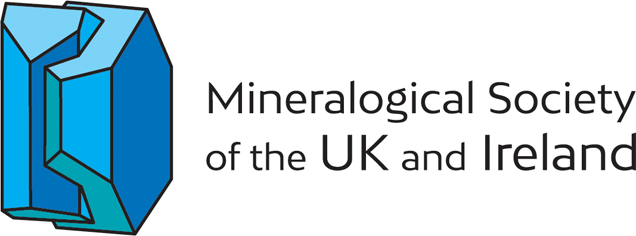
The Mineralogical Society of the United Kingdom and Ireland is an international society for all those working in the mineral sciences.

Research in Progress Meeting 24th. 2023 – Zoom
Research in Progress 2023. The Annual conference at which researchers, including research students, offer the community a view of the work in which they are engaged.
The second Research in Progress for 2023 - an on-line conference on the 24th. November
The second Research in Progress Meeting of the Historical Metallurgy Society for 2023 will take place online on Saturday, 24th of November.
It provides a forum for everyone working on topics related to ancient and historical metallurgical practices, the past use of metal objects, and related fields. We are keen to learn more about your ongoing or recently finished projects! The meeting aims to foster links between the different disciplines and geographical regions. Therefore, we particularly encourage submissions from early career researchers, contract archaeologists/conservators, and colleagues from outside Europe.
There will be an HMS prize for the best student presentation.
RiP is an opportunity to present work in progress or work recently completed. The Zoom format allows presentations to be pre-recorded, but at least one of the researchers involved must be (electronically!) present to answer questions that may arise. If you have research that you wish to present please check the details now by clicking here.
Online Zoom event. Conference attendance: free.
Organised by Thomas Rose [email protected]
Photo gallery.
Comments are closed.
If you encounter any problems or faults with the website please contact us at [email protected] .
The Historical Metallurgy Society Ltd
Registered Charity No 279314 Registered Company No 1442508
© 2024 The Historical Metallurgy Society.
- History of HMS
- Our Council
- HMS Publications Committee
- HMS Crucible Team
- HMS Web Team
- HMS Archives & Collections Committee
- HMS Outreach and Value Committee
- HMS and Conservation
- Member Area
- Current Events
- Other Events
- Student Prizes
- Historical Metallurgy Journal
- HMS Newsletter
- HMS Occasional Publications
- HMS Datasheets
- HMS Library
- HMS Archive
- HMS Tylecote Slag Collection
- National Slag Collection
- Database and resources
- Archive & Collections Study Days
- Other Guidelines
- Useful links
- World of Historical Metallurgy
- Shop Events
- Shop Historical Metallurgy
- Shop Occasional Publications
Click on the main text to go to those pages, clicking on the arrows shows you the sub pages
Bulletin of the American Physical Society
Bulletin Home
My Scheduler
Author Index
Session Index
Invited Speakers
Chair Index
Search Abstract
Search Affiliation
Using My Scheduler
APS March Meeting 2023
Volume 68, number 3, las vegas, nevada (march 5-10) virtual (march 20-22); time zone: pacific time, session d19: experimental progress in nonmagnetic solid-state topological insulators.
3:00 PM–5:48 PM, Monday, March 6, 2023 Room: Room 211 Sponsoring Unit: DCMP Chair: Yiming Xu
Abstract: D19.00006 : Observation of Chiral Phonons with Giant Magnetic Moments in a Topological Crystalline Insulator*
4:00 PM–4:12 PM
Felix G Hernandez (University of Sao Paulo)
Andrey Baydin (Rice University)
Swati Chaudhary (The University of Texas at Austin, Northeastern University, Massachusetts Institute of Technology)
Fuyang Tay (Rice University)
Ikufumi Katayama (Yokohama National University)
Jun Takeda (Yokohama National University)
Hiroyuki Nojiri (Tohoku University)
Anderson Okazaki (Brazilian Center for Research in Energy and Materials)
Paulo Rappl (Instituto Nacional de Pesquisas Espaciais)
Eduardo Abramof (Instituto Nacional de Pesquisas Espaciais)
Martin A Rodriguez-vega (University of Texas at Austin, Northeastern University)
Gregory A Fiete (Northeastern University, Massachusetts Institute of Technology)
Junichiro Kono (Rice University)
*This research was supported by NSF MRSEC No. DMR-1720595 and DMR-2114825, the Brasil@Rice Collaborative Grant, FAPESP Grants No. 2015/16191-5 and 2018/06142-5, CNPq Grants No. 307737/2020-9 and 307192/2021-0 and by the JSPS KAKENHI No. 20H05662.
© 2024 American Physical Society | All rights reserved | Terms of Use | Contact Us
Headquarters 1 Physics Ellipse, College Park, MD 20740-3844 (301) 209-3200 Editorial Office 100 Motor Pkwy, Suite 110, Hauppauge, NY 11788 (631) 591-4000 Office of Public Affairs 529 14th St NW, Suite 1050, Washington, D.C. 20045-2001 (202) 662-8700
- 25 Nov. 2022 Website Opens
- 28 Feb. 2023 Abstract Submission Opens
- 15 July 2023 Registration Opens
- All Programs are available
- Dec. 11-16, 2023 Meeting Date
THANK YOU FOR JOINING US
Dear Colleagues and Friends,
On behalf of the Organizing Committee of MRM2023/IUMRS-ICA2023, we would like to express our sincere appreciation to all of you for your participation and contribution to the Grand Meeting in Kyoto, Japan. The meeting was successful due to informative talks on cutting-edge subjects beyond traditional discipline and fruitful discussion.
We also wish to express our gratitude to all the presenters, meeting participants, students, sponsors, supporting organization, staffs for making the Meeting success, and our colleagues at the MRS-J, friends and family for their dedication and support of this Meeting.
There were 6 plenary lectures, 21 keynote lectures, 8 clusters & 33 topics, and 1860 oral and poster presentations, attended by more than 2000 registrants from 40 countries.
The MRM2025 will be held from December 8 to 13, 2025, in Yokohama. The venue is Pacifico Yokohama North. Call for Symposia will start next spring 2024. We sincerely welcome your attractive proposal.
We hope to see you again in Yokohama, in December 2025. Thank you and best wishes.
Masaharu Shiratani, Chairperson of MRM2023/IUMRS-ICA2023 Atsushi Suzuki, Secretary General
[MRM2023/IUMRS-ICA2023] May project, Inc., Yamanobe, Kuraishi, Matsumoto Nihonbashi Cosmo15 Bldg., 2-24-4, Nihonbashi, Ningyocho, Chuo-ku, Tokyo, 103-0013, Japan Email: [email protected]
The winner of Poster Award of MRM2023
About Conference
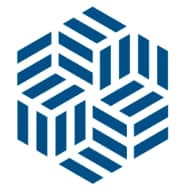
The MRM is the international conference launched in 2019 by the Materials Research Society of Japan (MRS-J) for promoting interdisciplinary materials crossing solid state physics, chemistry, materials science, and relevant discipline. It is a platform for high-level discussions on advanced materials research. The first meeting (in person) was held in Yokohama and the second meeting was at the same site as a hybrid due to the COVID-19. Both meetings were successful in scale (~40 symposia and ~1800 attendees) and quality: this success comes from excellent review talks by world-leading scientists, informative contributed presentations, and fruitful discussions on cutting-edge topics that transcended traditional disciplines.
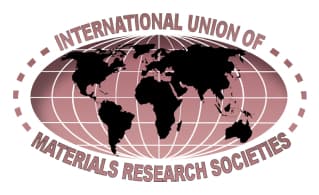
The IUMRS-ICA , on the other hand, is one of the most important serial conferences of the International Union of Materials Research Societies (IUMRS) and has been organized annually since 2008 by IUMRS members in Asia. In Japan, IUMRS-ICA was most recently held in Fukuoka in 2014, providing the opportunity for scientists, engineers, and students from not only Asia but around the world to exchange their recent achievements. A large number of researchers and students from across the world attended IUMRS-ICA, which has become a showcase for advanced materials research in Asia.
Under these backgrounds, the 3rd MRM will be held jointly with the historic IUMRS-ICA in Kyoto in 2023 as an international grand meeting ( MRM2023/IUMRS-ICA2023 ) covering a broader range of fields. This is not a simple joint meeting of two conferences, but a large-scale conference (grand meeting) that merges the features of each to create new value. The organizing committee is pleased to invite scientists, engineers and students working in all areas that are connected with the Materials Science and Engineering from all over the world.
This meeting consists of a meeting plenary session, several clusters, and one themed forum. Each cluster consists of multiple symposia and will feature three plenary lectures. The respective symposium provides invited talks, contributed lectures, and posters, focusing on specific topics.
- Plenary Session
- Clusters & Symposia
- Themed Forum
Abstract Submission is Now Closed
We would like to thank all authors who contributed their abstracts!
Platinum Sponsor

Silver Sponsor
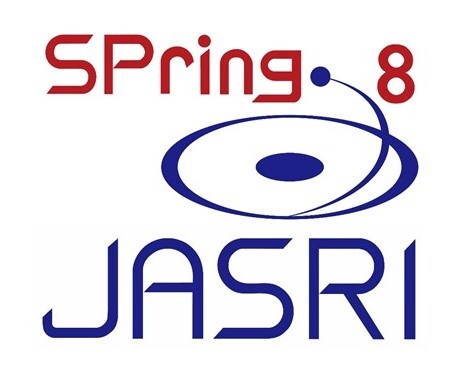
Symposium Sponsor

Exhibition Sponsor

Thank you for visiting nature.com. You are using a browser version with limited support for CSS. To obtain the best experience, we recommend you use a more up to date browser (or turn off compatibility mode in Internet Explorer). In the meantime, to ensure continued support, we are displaying the site without styles and JavaScript.
- View all journals
- Explore content
- About the journal
- Publish with us
- Sign up for alerts
Collection 06 March 2024
Physics Top 100 of 2023
This collection highlights the most downloaded* physics research papers published by Scientific Reports in 2023. Featuring authors from around the world, these papers highlight valuable research from an international community.
You can also view the journal's overall Top 100 or the Top 100 within various subject areas . *Data obtained from SN Insights, which is based on Digital Science’s Dimensions.
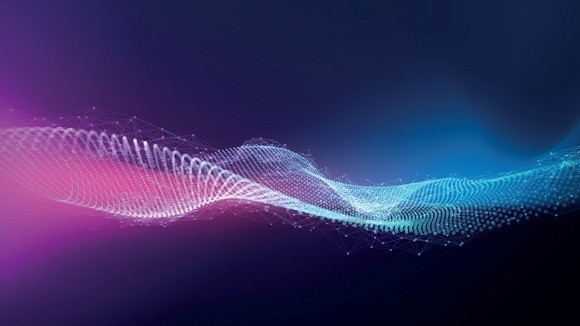
Geometric and physical interpretation of the action principle
- Gabriele Carcassi
- Christine A. Aidala

Hidden chamber discovery in the underground Hellenistic necropolis of Neapolis by muography
- Valeri Tioukov
- Kunihiro Morishima
- Giovanni De Lellis
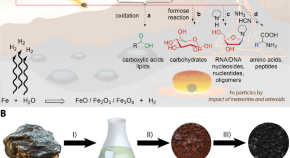
Synthesis of prebiotic organics from CO 2 by catalysis with meteoritic and volcanic particles
- Sophia Peters
- Dmitry A. Semenov
- Oliver Trapp
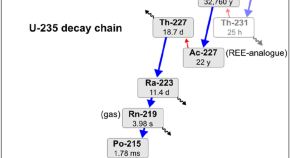
Alpha radiation from polymetallic nodules and potential health risks from deep-sea mining
- Jessica B. Volz
- Walter Geibert
- Sabine Kasten
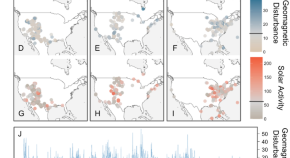
Geomagnetic disturbance associated with increased vagrancy in migratory landbirds
- Benjamin A. Tonelli
- Casey Youngflesh
- Morgan W. Tingley
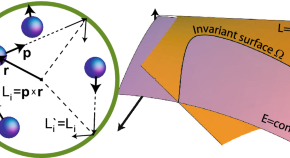
Distribution of energy in the ideal gas that lacks equipartition
- Dmitry M. Naplekov
- Vladimir V. Yanovsky
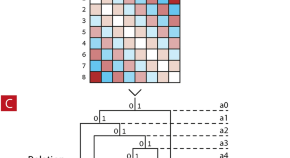
Quantization of events in the event-universe and the emergence of quantum mechanics
- Felix Benninger
- Andrei Khrennikov

Proposal for a Lorenz qubit
- Michael R. Geller
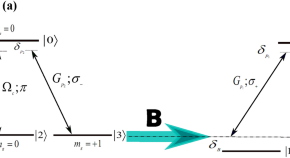
Coherent control of light-induced torque on four-level tripod atom systems
- Ali Mehdinejad
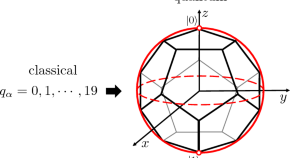
Variational quantum non-orthogonal optimization
- Pablo Bermejo
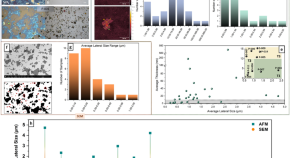
Graphene oxide classification and standardization
- Katarzyna Z. Donato
- A. H. Castro Neto
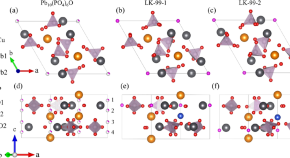
Semiconductivity induced by spin–orbit coupling in Pb 9 Cu(PO 4 ) 6 O
- Jianrong Ye
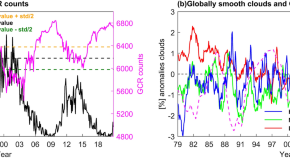
The influence of solar-modulated regional circulations and galactic cosmic rays on global cloud distribution
- Vinay Kumar
- Surendra K. Dhaka
- Shigeo Yoden
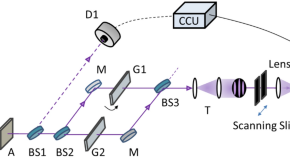
Revisiting self-interference in Young’s double-slit experiments
- Sangbae Kim
- Byoung S. Ham
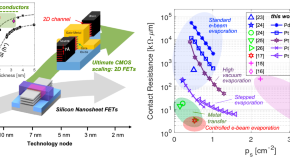
Improvements in 2D p-type WSe 2 transistors towards ultimate CMOS scaling
- Naim Hossain Patoary
- Ivan Sanchez Esqueda
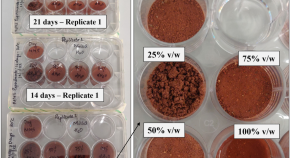
DNA sequencing at the picogram level to investigate life on Mars and Earth
- Jyothi Basapathi Raghavendra
- Maria-Paz Zorzano
- Javier Martin-Torres

Entanglement detection with artificial neural networks
- Uman Khalid
- Hyundong Shin
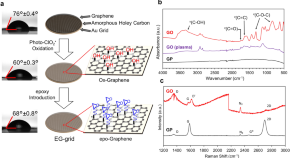
Epoxidized graphene grid for highly efficient high-resolution cryoEM structural analysis
- Junso Fujita
- Fumiaki Makino
- Tsuyoshi Inoue

Physically informed machine-learning algorithms for the identification of two-dimensional atomic crystals
- Laura Zichi
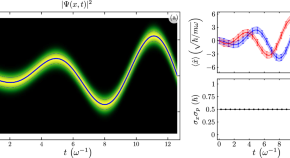
A quadratic time-dependent quantum harmonic oscillator
- E. García Herrera
- B. M. Rodríguez-Lara
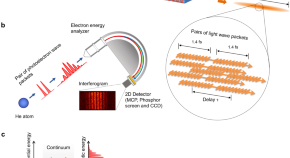
Time domain double slit interference of electron produced by XUV synchrotron radiation
- T. Kaneyasu
- Y. Hikosaka
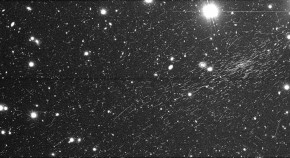
Observing cosmic-ray extensive air showers with a silicon imaging detector
- Satoshi Kawanomoto
- Michitaro Koike
- Tsuyoshi Terai
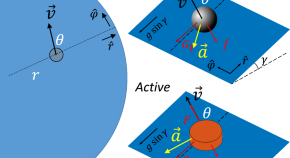
A robophysical model of spacetime dynamics
- Shengkai Li
- Hussain N. Gynai
- Daniel I. Goldman
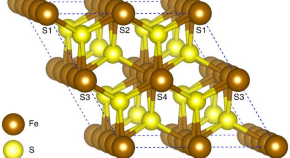
DFT-aided machine learning-based discovery of magnetism in Fe-based bimetallic chalcogenides
- Dharmendra Pant
- Suresh Pokharel
- Ranjit Pati
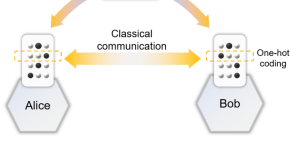
Quantum-aided secure deep neural network inference on real quantum computers
- Julie McCann
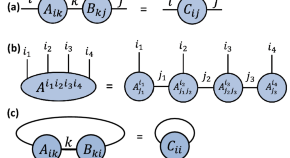

Practical overview of image classification with tensor-network quantum circuits
- Diego Guala
- Shaoming Zhang
- Juan Miguel Arrazola
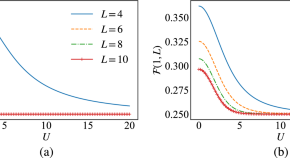
Long distance entanglement and high-dimensional quantum teleportation in the Fermi–Hubbard model
- Sanaa Abaach
- Zakaria Mzaouali
- Morad El Baz
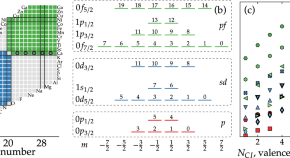
Nuclear shell-model simulation in digital quantum computers
- A. Pérez-Obiol
- A. M. Romero
- B. Juliá-Díaz
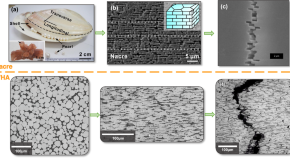
Investigation of interfacial strength in nacre-mimicking tungsten heavy alloys for nuclear fusion applications
- J. V. Haag IV
- M. Murayama
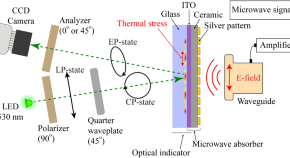
Characterization of interaction phenomena of electromagnetic waves with metamaterials via microwave near-field visualization technique
- Zhirayr Baghdasaryan
- Arsen Babajanyan
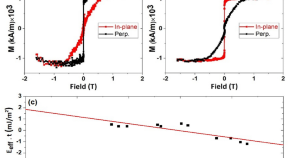
Perpendicular magnetic anisotropy, tunneling magnetoresistance and spin-transfer torque effect in magnetic tunnel junctions with Nb layers
- Pravin Khanal
- Wei-Gang Wang
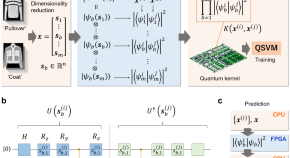
Quantum AI simulator using a hybrid CPU–FPGA approach
- Teppei Suzuki
- Tsubasa Miyazaki
- Takahiro Otsuka

Externally-triggerable optical pump-probe scanning tunneling microscopy with a time resolution of tens-picosecond
- Katsuya Iwaya
- Munenori Yokota
- Hidemi Shigekawa
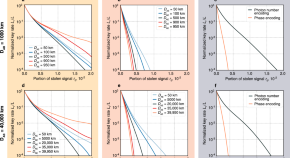
Forty thousand kilometers under quantum protection
- N. S. Kirsanov
- V. A. Pastushenko
- V. M. Vinokur
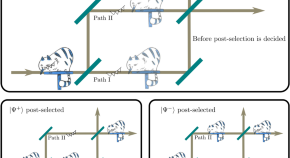
Quantum causality emerging in a delayed-choice quantum Cheshire Cat experiment with neutrons
- Richard Wagner
- Wenzel Kersten
- Yuji Hasegawa
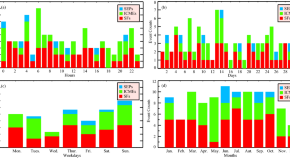
Additional flight delays and magnetospheric–ionospheric disturbances during solar storms
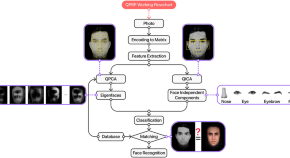
Quantum face recognition protocol with ghost imaging
- Vahid Salari
- Dilip Paneru
- Ebrahim Karimi
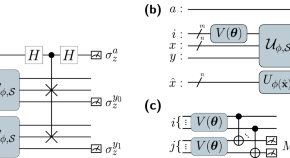
Variational quantum approximate support vector machine with inference transfer
- Siheon Park
- Daniel K. Park
- June-Koo Kevin Rhee
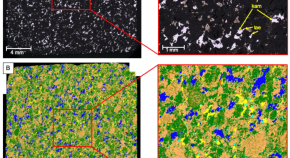
A novel method for extracting metals from asteroids using non-aqueous deep eutectic solvents
- Rodolfo Marin Rivera
- Philip Bird
- Andrew P. Abbott
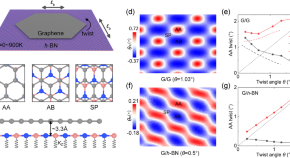
Heterostrain and temperature-tuned twist between graphene/ h -BN bilayers
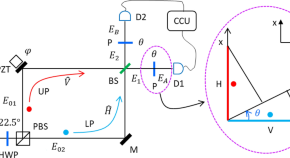
Observations of the delayed-choice quantum eraser using coherent photons
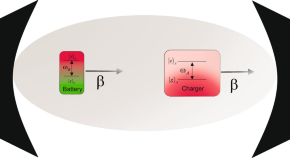
Study the charging process of moving quantum batteries inside cavity
- Maryam Hadipour
- Soroush Haseli
- Maryam Rashidi
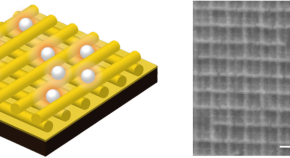
Imaging and identification of single nanoplastic particles and agglomerates
- Ambika Shorny
- Fritz Steiner
- Sarah M. Skoff
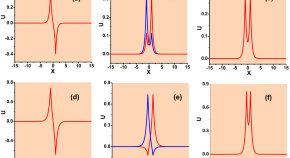
A solvable model for symmetry-breaking phase transitions
- Shatrughna Kumar
- Boris A. Malomed
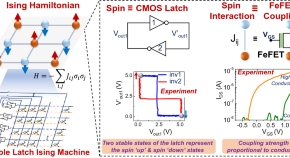
CMOS-compatible ising machines built using bistable latches coupled through ferroelectric transistor arrays
- Antik Mallick
- Zijian Zhao
- Nikhil Shukla
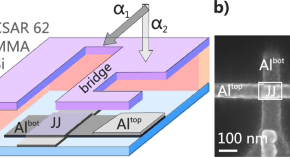
Improving Josephson junction reproducibility for superconducting quantum circuits: junction area fluctuation
- Anastasiya A. Pishchimova
- Nikita S. Smirnov
- Ilya A. Rodionov
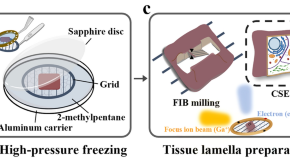
CryoFIB milling large tissue samples for cryo-electron tomography
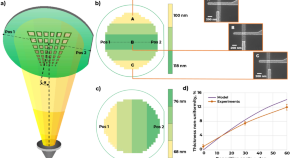
Optimization of shadow evaporation and oxidation for reproducible quantum Josephson junction circuits
- Dmitry O. Moskalev
- Evgeniy V. Zikiy
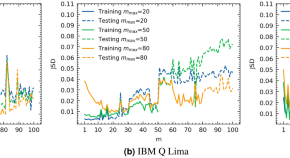
Efficient noise mitigation technique for quantum computing
- Mohamad Hussein Naim
- Fadi Kurdahi
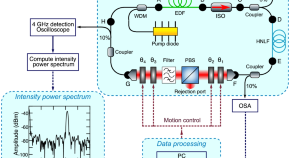
Genetic algorithm optimization of broadband operation in a noise-like pulse fiber laser
- Coraline Lapre
- Fanchao Meng
- John M. Dudley
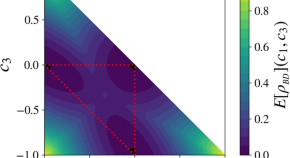
Entanglement and quantum correlation measures for quantum multipartite mixed states
- Arthur Vesperini
- Ghofrane Bel-Hadj-Aissa
- Roberto Franzosi

Highly efficient graphene terahertz modulator with tunable electromagnetically induced transparency-like transmission
- Myunghwan Kim
- Seong-Han Kim
- Chul-Sik Kee
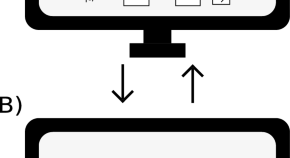
Quantum neural network cost function concentration dependency on the parametrization expressivity
- Lucas Friedrich
- Jonas Maziero
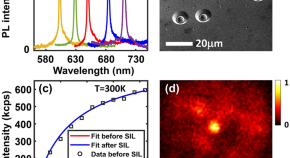
Dephasing by optical phonons in GaN defect single-photon emitters
- Farhan Rana
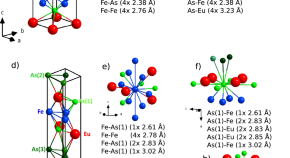
Effects of Ni/Co doping on structural and electronic properties of 122 and 112 families of Eu based iron pnictides
- Joanna Stępień
- Damian Rybicki
- Danilo Oliveira De Souza
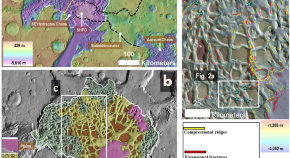
Exploring the evidence of Middle Amazonian aquifer sedimentary outburst residues in a Martian chaotic terrain
- J. Alexis P. Rodriguez
- Mary Beth Wilhelm
- Denise Buckner
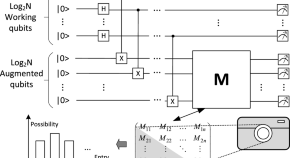
A universal variational quantum eigensolver for non-Hermitian systems
- Huanfeng Zhao
- Tzu-Chieh Wei
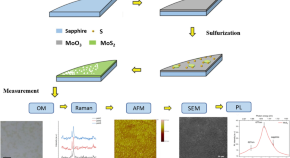
Large area MoS 2 thin film growth by direct sulfurization
- Kai-Yao Yang
- Hong-Thai Nguyen
- Hsiang-Chen Wang
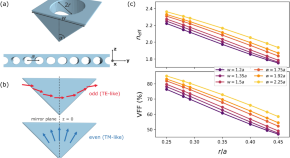
Utilizing photonic band gap in triangular silicon carbide structures for efficient quantum nanophotonic hardware
- Pranta Saha
- Sridhar Majety
- Marina Radulaski
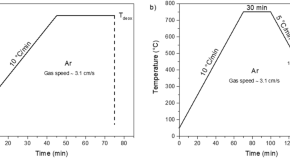
Impact of deoxygenation/reoxygenation processes on the superconducting properties of commercial coated conductors
- Pablo Cayado
- Marco Bonura
- Carmine Senatore

3D metamaterial ultra-wideband absorber for curved surface
- Mahdi Norouzi
- Saughar Jarchi
- Gholamhosein Moloudian
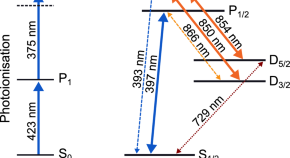
A fully fiber-integrated ion trap for portable quantum technologies
- Xavier Fernandez-Gonzalvo
- Matthias Keller
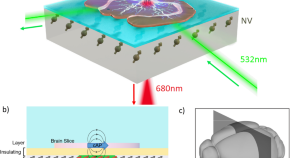
Microscopic-scale magnetic recording of brain neuronal electrical activity using a diamond quantum sensor
- Nikolaj Winther Hansen
- James Luke Webb
- Ulrik Lund Andersen
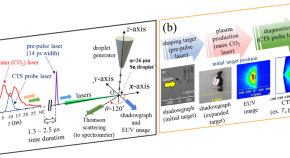
Observation of plasma inflows in laser-produced Sn plasma and their contribution to extreme-ultraviolet light output enhancement
- Kentaro Tomita
- Katsunobu Nishihara
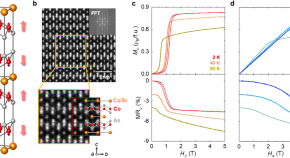
Spin-flip-driven anomalous Hall effect and anisotropic magnetoresistance in a layered Ising antiferromagnet
- Dong Gun Oh
- Jong Hyuk Kim
- Young Jai Choi
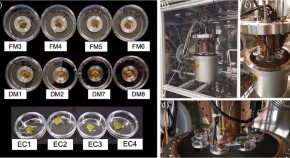
Survivability of the lichen Xanthoria parietina in simulated Martian environmental conditions
- Christian Lorenz
- Elisabetta Bianchi
- Mickaël Baqué
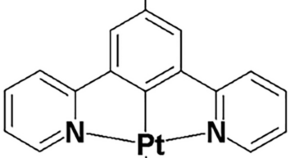
Fluorescence and phosphorescence lifetime imaging reveals a significant cell nuclear viscosity and refractive index changes upon DNA damage
- Ellen Clancy
- Siva Ramadurai
- Stanley W. Botchway
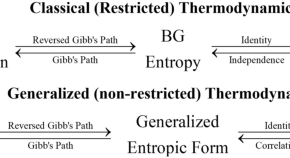
Entropy defect in thermodynamics
- George Livadiotis
- David J. McComas
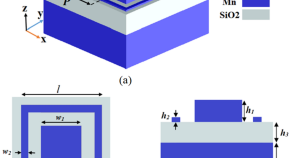
Design and optimization of broadband metamaterial absorber based on manganese for visible applications
- Shimaa I. Sayed
- K. R. Mahmoud
- Roaa I. Mubarak
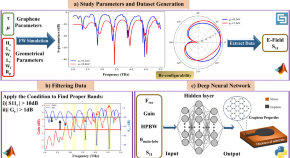
A reconfigurable graphene patch antenna inverse design at terahertz frequencies
- Mohammad Mashayekhi
- Pooria Kabiri
- Mohammad Soleimani
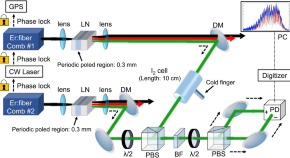
Precision dual-comb spectroscopy using wavelength-converted frequency combs with low repetition rates
- Yohei Sugiyama
- Tsubasa Kashimura
- Feng-Lei Hong
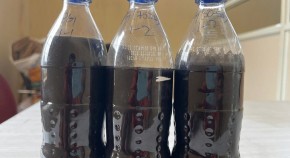
Study comparing the tribological behavior of propylene glycol and water dispersed with graphene nanopowder
- A. Haribabu
- Raviteja Surakasi
- Sasan Zahmatkesh

Tunable growth of one-dimensional graphitic materials: graphene nanoribbons, carbon nanotubes, and nanoribbon/nanotube junctions
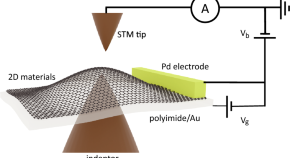
In-situ atomic level observation of the strain response of graphene lattice
- Jz-Yuan Juo
- Bong Gyu Shin
- Soon Jung Jung
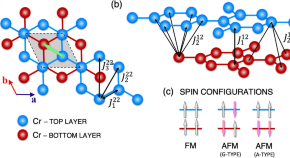
Control of magnetic states and spin interactions in bilayer CrCl 3 with strain and electric fields: an ab initio study
- Ali Ebrahimian
- Anna Dyrdał
- Alireza Qaiumzadeh
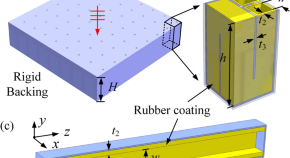
Ultrathin acoustic metamaterial as super absorber for broadband low-frequency underwater sound
- Xindong Zhou
- Xiaochen Wang
- Fengxian Xin
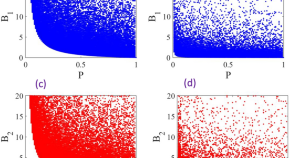
Speed limit of quantum metrology
- Yusef Maleki
- Bahram Ahansaz
- Alireza Maleki
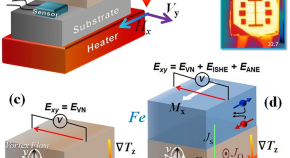
Spin Seebeck effect mediated reversal of vortex-Nernst effect in superconductor-ferromagnet bilayers
- Himanshu Sharma
- Zhenchao Wen
- Masaki Mizuguchi
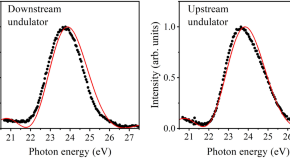
Frequency-domain interferometry for the determination of time delay between two extreme-ultraviolet wave packets generated by a tandem undulator
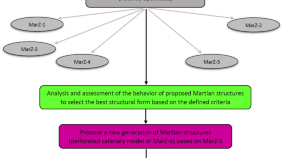
Sustainable colonization of Mars using shape optimized structures and in situ concrete
- Omid Karimzade Soureshjani
- Ali Massumi
- Gholamreza Nouri
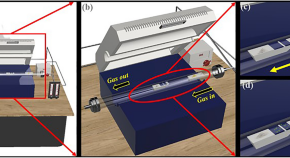
New insights into APCVD grown monolayer MoS 2 using time-domain terahertz spectroscopy
- Saloni Sharma
- Pooja Chauhan
- Bipin Kumar Gupta
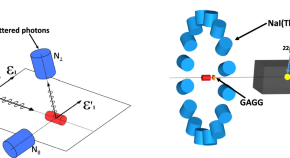
Testing entanglement of annihilation photons
- Alexander Ivashkin
- Dzhonrid Abdurashitov
- Igor Tkachev
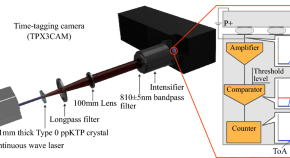
Characterisation of a single photon event camera for quantum imaging
- Victor Vidyapin
- Yingwen Zhang
- Benjamin Sussman

Automatic detection of multilayer hexagonal boron nitride in optical images using deep learning-based computer vision
- Fereshteh Ramezani
- Sheikh Parvez
- Bradley M. Whitaker

Taking advantage of noise in quantum reservoir computing

Higher-order topological corner state in a reconfigurable breathing kagome lattice consisting of magnetically coupled LC resonators
- Kenichi Yatsugi
- Shrinathan Esakimuthu Pandarakone
- Hideo Iizuka
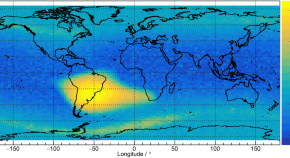
Impact of the South Atlantic Anomaly on radiation exposure at flight altitudes during solar minimum
- Matthias M. Meier
- Thomas Berger
- Michael Wirtz

Initial results of the meteorological data from the first 325 sols of the Tianwen-1 mission
- Chunsheng Jiang
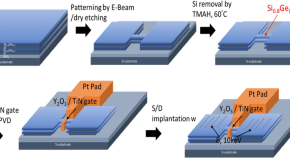
Stacked SiGe nanosheets p-FET for Sub-3 nm logic applications
- Chun-Lin Chu
- Shu-Han Hsu
- Szu-Hung Chen
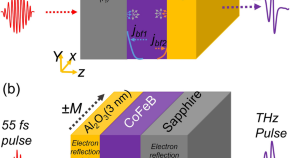
Direct evidence of terahertz emission arising from anomalous Hall effect
- Venkatesh Mottamchetty
- Rahul Gupta
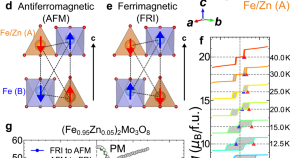
Thermodynamic determination of the equilibrium first-order phase-transition line hidden by hysteresis in a phase diagram
- Keisuke Matsuura
- Yo Nishizawa
- Fumitaka Kagawa
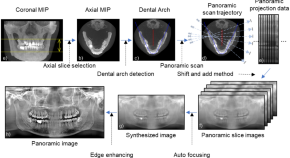
Panoramic dental tomosynthesis imaging by use of CBCT projection data
- Taejin Kwon
- Seungryong Cho

Magnetic field and nuclear spin influence on the DNA synthesis rate
- Sergey V. Stovbun
- Dmitry V. Zlenko
- Anatoly L. Buchachenko
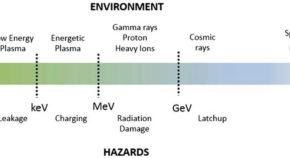
Comparison of cubesat and microsat catastrophic failures in function of radiation and debris impact risk
- Isabel Lopez-Calle
- Alexander I. Franco
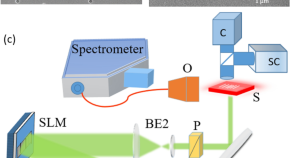
2D tunable all-solid-state random laser in the visible
- Bhupesh Kumar
- Patrick Sebbah
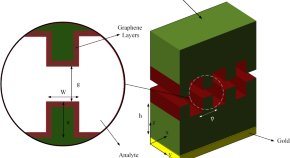
Highly sensitive label-free biosensor: graphene/CaF 2 multilayer for gas, cancer, virus, and diabetes detection with enhanced quality factor and figure of merit
- Behnam Jafari
- Elnaz Gholizadeh
- Saeed Golmohammadi
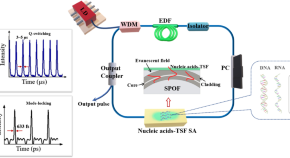
Highly nonlinear optic nucleic acid thin-solid film to generate short pulse laser
- Marjan Ghasemi
- Pulak Chandra Debnath
- Kyunghwan Oh
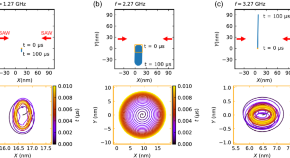
Trapping and manipulating skyrmions in two-dimensional films by surface acoustic waves
- Yu Miyazaki
- Tomoyuki Yokouchi
- Yuki Shiomi

Direct observation of electric field-induced magnetism in a molecular magnet
- M. Lewkowitz
- Ali Sirusi Arvij
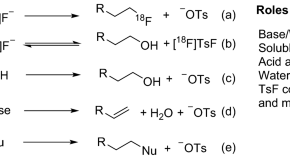
[ 18 F]Tosyl fluoride as a versatile [ 18 F]fluoride source for the preparation of 18 F-labeled radiopharmaceuticals
- John A. Katzenellenbogen
Quick links
- Explore articles by subject
- Guide to authors
- Editorial policies
- Travel Grants
- Annual Meeting Program
- ISBM Post-Meeting
- Energy Metabolism Symposium
- Early-Stage Investigator Program
- Rare Bone Disease Symposium
- Registration
- Housing/Travel
- Marketing Resources
- Exhibits & Sponsorship

ASBMR 2024 Annual Meeting Keynote Lectures
2024 gerald d. aurbach lecturer , vadim gladyshev, ph.d. .
Dr. Vadim Gladyshev is a Professor of Medicine at Brigham and Women's Hospital, Harvard Medical School. Research in his lab revolves primarily around aging, lifespan control and rejuvenation. The lab has also had longstanding interests in selenium and redox biology. Read more about his labs research here: https://gladyshevlab.bwh.harvard.edu/our-research .
2024 Louis V. Avioli Lecturer
Thomas clemens, ph.d. .
Dr. Thomas Clemens is a Professor of Orthopedics at the University of Maryland School of Medicine. Dr. Clemens research is focused on identification of the cellular and molecular mechanisms, which control bone osteoblast activity. Dr. Clemens received his Ph.D. in Biochemistry from the University of London in London, England and completed postdoctoral training as a Research Fellow in Medicine at Massachusetts General Hospital. Dr. Clemens was an Associate Professor in Medicine at Cedars Sinai Medical Center, where he founded a Masters program in Biomedical Sciences. Subsequently, he was a Professor of Medicine at the University of Cincinnati where he directed the Pathobiology and Molecular Medicine graduate program. In 2004, Dr. Clemens became director of the Division of Molecular and Cellular Pathology at the University of Alabama at Birmingham where he established a Howard Hughes-funded Med-to-Grad doctoral program.
PARTICIPANTS
9:15-9:30 am
9:30-9:45 am
9:45-10:45 am
PRESENTATIONS
10:45-11:00 am
11:00 am-12:15 pm
12:15-1:45 pm
12:30-1:30 pm
12:45-1:45 pm
1:45-2:45 pm
2:45-3:15 pm
3:15-4:15 pm
4:15-4:30 pm
4:30-5:30 pm
5:30-7:30 pm
7:30-9:30 pm
8:00-9:15 am
10:45-11:15 am
11:15 am-12:30 pm
12:30-1:45 pm
1:45-2:15 pm
2:15-3:45 pm
3:45-4:00 pm
4:00-5:00 pm
5:00-5:15 pm
5:15-6:15 pm
8:00-9:00 pm
9:00-11:00 pm
6:15-6:45 pm
7:00-9:00 pm
9:00-9:15 am
9:30-10:45 am
FCOI Policy for R13 Funded ASBMR Meetings
Hotels and Housing
ASBMR encourages all people to participate in its programs and activities. If you anticipate needing any accommodations for your abstract presentation or have questions about the physical access provided at the Annual Meeting, please contact the ASBMR Business Office at [email protected] or +1 (202) 367-1161.
Additional details on the conventions center's ADA compliance/accommodations can be found at https://www.mtccc.com/facility/accessibility/

2001 K Street NW, Third Floor North, Washington, DC 20006, USA Phone: +1 (202) 367-1161 | Fax: +1 (202) 367-2161 [email protected]

This site uses cookies. By continuing to browse the site you are agreeing to our use of cookies. Review our Policies and Procedures for more details

IMAGES
VIDEO
COMMENTS
🚨Registration for the #Mineral #Physics Research in Progress meeting 2023 is open and is FREE! 🌐 School of Earth Sciences, University of Bristol (@UoBEarthScience) + online 📅 4th-5th Sep 🆓 Support for travel/accommodation available.
SAVE THE DATE If you are a member of the #Mineral #Physics community or related fields, then please attend our 2023 #Research in Progress meeting @UoBEarthScience on the 4+5th of September. Abstract submission opens in May, and student bursaries are available! @MinSoc_UK
[2023] University of Lille, "Progress in synchrotron multigrain X-ray diffraction techniques-- Exploring the petrology of deep planetary interiors" ... COMPRES Annual Meeting [2018-2021] NSF Graduate Research Fellowship [2017] Outstanding Student Paper Award, Mineral and Rock Physics, AGU Fall Meeting [2017] McCormick Fellowship, University of ...
2023 Clay Minerals Group Research- in-Progress Meeting, Leeds, England. Web page: forthcoming. May 15-18 Brines Across the Solar System: Ancient and Future Brines, ... 2023 Clay Minerals Group Research in Progress Meeting, Leeds, England. Web page: forthcoming. May 20-25 Clay Minerals Society Meeting, Austin, TX, USA. Web page:
Laboratory for Mineral Physics | News. FORCE Winter Workshop (January 2024) Andy Campbell was an invited speaker at the 2nd FORCE Winter Workshop on Recent Advances in High Pressure Research, held at Arizona State University. HPCAT 20th Anniversary Workshop (November 2023) Andy Campbell was an invited speaker at the HPCAT 20th Anniversary ...
Geochemistry Group's Research in Progress meeting, which will be held on 9-11 April 2024 at Durham University. For more details and ... Clay Minerals Group will hold its annual RiP meeting at the University ... The Mineral Physics Group plans to follow up its most successful RiP ever (U. Bristol, 2023) with another well-attended event. The ...
18 May 2023. This event is a collaboration between Mineralogical Society of the UK and Ireland and TFI Network+. This meeting will explore recent advances in understanding the role of clay minerals in construction, and how they can be used to shape and improve the built environment. This topic area spans everything from clay-based renders to ...
AGU Fall Meeting 2023. December 11th - 15th, 2023 - San Francisco, CA & Online Everywhere ... International Conference in Computational Physics (CCP'22) Gordon Research Conference: Research at High Pressure 2022 ... the Emerging Picture from Mineral Physics: Mar. 9, 2006: Dr. Wendy Li-Wen Mao, Los Alamos National Laboratory:
Explore the latest full-text research PDFs, articles, conference papers, preprints and more on MINERAL PHYSICS. Find methods information, sources, references or conduct a literature review on ...
From the tools of Stone Age ancestors to records of Earth's history, Yang Li and Xian-Hua Li explore how the properties of quartz place it at the heart of human innovation. Yang Li. Xian-Hua Li ...
In past few years substantial progress has been made in the field of metabolomics research. Novel metabolomics work-flow, mass spectrometry and ion mobility-based instrumentation and complex multivariate statistical analyses were developed and employed in recent years to understand biochemical traits in many different areas including but not ...
APS March Meeting 2023 Volume 68, Number 3 Las Vegas, Nevada (March 5-10) ... Ltd. (Japan) successfully developed a new-generation phosphor, SrAl 2 O 4:Eu 2+,Dy 3+, opening up a new era of scientific research on persistent luminescence. Three decades later, ... Headquarters 1 Physics Ellipse, College Park, MD 20740-3844 ...
October 13, 2023 - October 16, 2023. ASBMR gathers thousands of the field's academic and clinical leaders each year at its annual meeting to discuss the latest bone and mineral research. For more information about future annual meetings, including program information and sponsorship opportunities, email [email protected].
We would like to show you a description here but the site won't allow us.
Research Briefing 21 Mar 2023 Confining quantum spin defects to two dimensions Controlling the spatial distribution of optically active spin defects in solids is a long-standing goal in the ...
The second Research in Progress Meeting of the Historical Metallurgy Society for 2023 will take place online on Saturday, 24th of November. It provides a forum for everyone working on topics related to ancient and historical metallurgical practices, the past use of metal objects, and related fields. We are keen to learn more about your ongoing ...
APS March Meeting 2023 Volume 68, Number 3 Las Vegas, Nevada (March 5-10) ... (Brazilian Center for Research in Energy and Materials) Paulo Rappl (Instituto Nacional de Pesquisas Espaciais) Eduardo Abramof ... Headquarters 1 Physics Ellipse, College Park, MD 20740-3844 (301) ...
Mark your calendar, and join us October 13-16, 2023 in Vancouver, BC, Canada at the Vancouver Convention Centre for the ASBMR 2023 Annual Meeting!With more than 100 education sessions, 1,000+ poster presentations, and multiple opportunities for meeting your peers, this event is your best opportunity to explore the latest science in the field of bone, mineral and musculoskeletal research.
The MRM is the international conference launched in 2019 by the Materials Research Society of Japan (MRS-J) for promoting interdisciplinary materials crossing solid state physics, chemistry, materials science, and relevant discipline. It is a platform for high-level discussions on advanced materials research. The first meeting (in person) was held in Yokohama and the second meeting was at the ...
Physics Top 100 of 2023. This collection highlights the most downloaded* physics research papers published by Scientific Reports in 2023. Featuring authors from around the world, these papers ...
ASBMR 2023 Annual Meeting Abstracts. The complete Annual Meeting Abstracts from 2023 are available here and are fully citable as an electronic supplement to the Journal of Bone and Mineral Research. From this site, you can search and click on the desired abstract. The full abstract will open. You can then copy the URL address and paste it to ...
ASBMR 2024 Annual Meeting Keynote Lectures 2024 Gerald D. Aurbach Lecturer Vadim Gladyshev, Ph.D. Dr. Vadim Gladyshev is a Professor of Medicine at Brigham and Women's Hospital, Harvard Medical School. Research in his lab revolves primarily around aging, lifespan control and rejuvenation.
3. EPP2024 in Context. •P5will prioritize projects in particle physics "over a 10-year timeframe in the context of a 20-year, globally-aware strategy for the field.". Report to be released October 2023 •EPP2024 will provide a vision and the approaches needed to achieve it over a much longer timescale (decade and beyond).
NCN News - Thursday, May 09, 2024 _____ WEBSITE STREAM: https://ncnguyana.com/2023/ NCN TV ACROSS GUYANA: Ch. 11 - Georgetown Ch. 13 & 8 -...
The role of rice genomics in breeding progress is becoming increasingly important. Deeper research into the rice genome will contribute to the identification and utilization of outstanding functional genes, enriching the diversity and genetic basis of breeding materials and meeting the diverse demands for various improvements. Here, we review the significant contributions of rice genomics ...